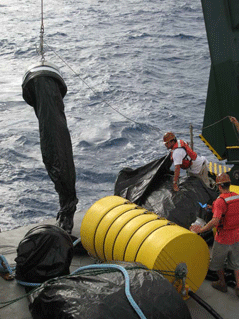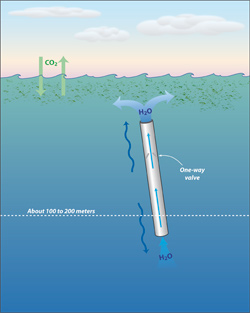The Basics
Increases in atmospheric carbon dioxide (CO2) levels and associated changes in the earth's climate that have occurred since the preindustrial era have prompted scientists and engineers to devise strategies for removing some of this excess CO2 from the atmosphere. One such strategy, called ocean fertilization, involves the amplification of a natural system in the ocean called the biological pump.
Ocean fertilization is a form of geoengineering (large-scale human actions to deliberately manipulate environmental systems) that involves adding nutrients to the upper (sunlit) layers of the ocean to stimulate phytoplankton activity (photosynthesis) in an attempt to draw down atmospheric CO2 levels. Phytoplankton are tiny marine plants that form the base of the marine food web and are naturally limited by the availability of elements such as nitrogen and iron. Proposed ocean fertilization strategies have included the direct application of micronutrients (e.g., iron) and macronutrients (e.g., nitrogen) to the ocean surface, as well as technologies like wave pumping and floating tubes to physically move deeper, more nutrient-rich waters to the surface.
What is Macronutrient Fertilization?
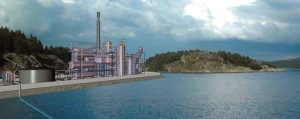
This artist's rendition of an Ocean Nourishment Corporation plant shows how the company would pump urea into the ocean to stimulate plankton growth. Image: Courtesy of Ocean Nourishment Corporation
Macronutrient fertilization refers to the addition of growth-limiting macronutrients such as nitrogen and phosphorus to the surface ocean to stimulate phytoplankton production, which is expected to increase photosynthesis and remove CO2 from the atmosphere.
Large-scale ocean nourishment with urea, a nitrogen-rich organic compound commonly used in fertilizers, has been proposed as a potential ocean fertilization strategy by the Ocean Nourishment Corporation (ONC), an Australia-based company.
What is Micronutrient Fertilization?
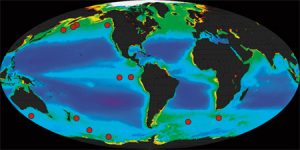
Map of iron fertilization sites (Courtesy of Woods Hole Oceanographic Institution).
Micronutrient fertilization refers to the addition of growth-limiting micronutrients such as iron to the surface ocean to stimulate phytoplankton production, which is expected to increase photosynthesis and remove CO2 from the atmosphere.
International Iron Fertilization Experiments
Equatorial Pacific
- Ironex I (1993)
- Ironex II (1995)
- Proposed ocean fertilization in Chile (2018)
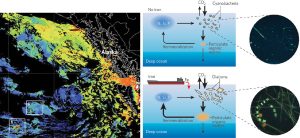
From Armbrust, E. V. (2009). The life of diatoms in the world's oceans Nature 459, 185-192, doi:10.1038/nature08057.
Subarctic North Pacific
- Subarctic Pacific Iron Experiment for Ecosystem Dynamics Study (SEEDS) (2001)
- Subarctic Ecosystem Response to Iron Enrichment
- Study (SERIES) (2002)
- SEEDS-II (2004)
- In 2012, the Haida Salmon Restoration Corporation (HSRC) conducted a small scale Ocean Iron Fertilization (OIF) experiment in the North Pacific. 120 tons of iron compound were deposited in the migration routes of pink and sockeye salmon in the Pacific ocean West of Haida Gwaii over a period of 30 days. The project resulted in a 35,000 km 2 plankton bloom that lasted for several months. The HSRC scientific team collected a wealth of oceanographic data.
- Dr. Peter Strutton (Univ. of Tasmania) - preliminary calculations and perspectives on the Haida Gwaii iron dumping (11/5/12)
- "Satellite imagery of the rogue Canadian iron dumping experiment" (Deep Sea News blog, 10/19/12)
- "The First Geo-Vigilante" (The New Yorker, 10/18/12)
- "Iron Dumping In The Pacific Ocean Stirs Controversy Over Geoengineering" (Huffington Post, 10/19/12)
- "A Rogue Climate Experiment Outrages Scientists" (NY Times, 10/18/12)
- Environment Canada ocean fertilization fact sheet
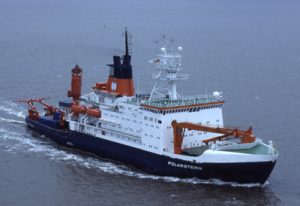
Indo-German ocean iron fertilization field experiment Lohafex carried out in the southwestern Atlantic Ocean on the R/V Polarstern January-March 2009.
Southern Ocean
- Southern Ocean Iron Release Experiment (SOIREE) (1999)
- EisenEx (2000)
- Southern Ocean Iron Experiment (SOFeX) - North and South (2002)
- European Iron Fertilization Experiment (EIFEX) (2004)
- SOLAS Air-Sea Gas Experiment (SAGE) (2004)
- CROZet natural iron bloom and Export experiment (CROZEX)(2005)
- Kerguelen Ocean and Plateau compared Study (KEOPS) (2005)
- LOHAFEX (2009)
What is Artificial Upwelling?
Artificial upwelling is a geoengineering strategy that involves bringing relatively nutrient-rich waters from depth up to the surface ocean to stimulate phytoplankton activity and draw down atmospheric CO2.
- Experimental study on the performance of a wave pump for artificial upwelling (2016)
- Research progress in artificial upwelling and its potential environmental effects (2015)
- Experimental and analytical investigations of wave-induced artificial upwelling (2014)
- Climate engineering by artificial ocean upwelling: Channelling the sorcerer's apprentice (2010)
- Scientists Test “Artificial Upwelling” to Learn More About Complex Ocean Ecosystem Behavior (2008)
- Artificial upwelling induced by ocean currents —Theory and experiment (1978)
Wave-Powered Ocean Pumps and Floating Tubes
Wave-Powered Ocean Pumps: This strategy involves the use of wave-powered ocean pumps to bring nutrient-rich deep water to the surface to stimulate plankton blooms (Karl and Letelier, 2008). Initial experiments with the wave-powered pumps were performed at Station ALOHA ~80 miles off the coast of Oahu (see White et al. 2010, short video describing a ocean pump upwelling experiment or the full Discovery Channel Project Earth: Hungry Ocean DVD)
Floating Tubes: This strategy proposed by Lovelock and Rapley (2007) involves the deployment of thousands of plastic tubes (~300-600 feet long and ~30 feet in diameter) in the oceans, bridging nutrient-poor surface waters with colder, nutrient-rich waters at depth. In addition to mixing via natural wave motion, a one-way valve would pump nutrient-rich deep water through the tubes to the ocean surface, stimulating phytoplankton activity.
